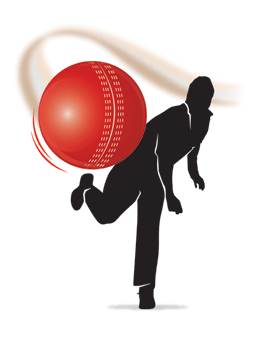How to Bowl Spin on a Flat Pitch
 Menno Gazendam is author of Spin Bowling Project. Get your free 8 week spin bowling course here
Menno Gazendam is author of Spin Bowling Project. Get your free 8 week spin bowling course here
Why would anyone prepare pitches that do not take any spin?
It's a great loss for the game when the beauty of spin bowling is neutralised by flat pitches. It is a modern day trend at the top level cricket that will hopefully change.
Luckily, at club level the pitch usually just is what it is.
No groundsmen spent weeks preparing it to the exact specifications of the home team. And so, you will find more turning pitches at lower levels than at top levels.
Yet, it does happen that you arrive at the game on a Saturday and you are met with a flat looking pitch that looks like glass. One that will not take even a little turn.
What do you do?
- Spin as hard as possible. This does not make sense at first, as why would you spin the ball as hard as possible when the pitch is not even turning? Well, the more revolutions you put on the ball the more it will dip as a result if the Magnus Effect. When you are faced with a pitch that does not turn it becomes even more important to beat the batsman in the air. So, rip it as hard as possible.
- Bowl more top spin. Top spin will make the ball dip even sharper than usual. You will lose drift, but that is OK.
- Bowl a straighter line. Remember your old lines - based on big turn off the pitch - will not work as the ball is staying straight on the pitch.
So, as you can see your tactic becomes one of beating the batsman in the air rather than off the pitch.
What happens in the air is not influenced by the pitch and so is always a good tactic for those flat non-spinning days.
For more detailed spin bowling advice, tips, tricks, tactics and training drills for spinners in all formats of cricket, get the Spin Bowling Project free 8 week email coaching course.
- Login to post comments


Comments
Topspin is important: a flat shiny pitch will often have lots of bounce.
Also, if its a reasonably quick pitch, you can take a little bit of pace off the ball and mix up the flight knowing that the batsman can't just sit on the backfoot to length balls.
There's no such thing as a "bad" pitch for spinners, they all offer you something that you can take advantage of with a bit of cunning.
I agree, that's because spinners don't just use the pitch.
It's interesting that most spinners deal with flat pitches by bowling with more topspin, but wouldn't side spin be just as effective? If you bowl with more topspin than usual the ball will dip more sharply, and bounce steeply of the pitch, but you also lose any chance of the ball turning. If you bowl with more side spin, the ball will drift more and depending on the type of breeze land either shorter / fuller than expected, but there is also a greater chance for the ball to turn a bit.
When I bowl on a flat, non-turning wicket I use a clean side spinner as my stock delivery in the following cases: When there is a head wind, or a cross wind from either side. But if there isn't any wind I would rather go for backspin and surprise topspin, the reason being that my stock leg break drifts away from the batsman (yes I'm a chinaman) quite considerably, and when it hits this non-turning deck it will just skid on. However this isn't a bad thing, because then I'm the equivalent of a slow outswing bowler to a right hander, that gets the ball to drop or carry fuller than expected (if there is a wind present) with the occasional delivery dropping even more or carrying even fuller. (and there's a slight chance that the ball might nip back in)
The topspinner is probably your most deadly delivery on a non-turning wicket, so why would you want to use it every ball anyway? It's the same as a bowler who uses clean side spinners on a turning wicket nearly every ball, deadly for a while, until the batsmen realize that you can't turn the ball any more than that. They get accustomed to the big turn, and feed off any other deliveries because they know the straighter ball is coming. So wouldn't it be better for you to conceal your topspinner / topspinning deliveries? And bowl with more side spin / back spin, setting the batsman up for the dropping topspinner that kicks into their helmets?